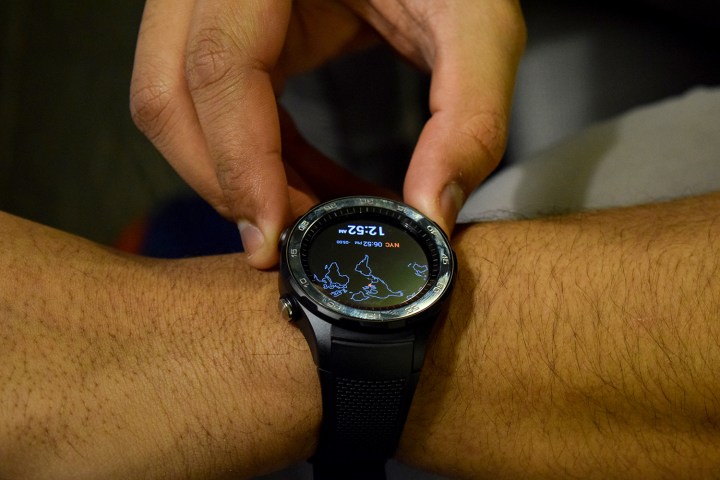
Huawei hasn’t abandoned the smartwatch market, CEO Richard Yu says. Instead the company is working towards making smartwatches better before releasing a new one. Yu’s comments came during an interview session with Digital Trends and a handful of other reporters.
When asked if smartwatches were still an area the company was interested in, Yu replied, “Yes, but it needs more innovation, and we are working on that.”
“We want to make bigger improvements and make the experience much better than today,” Yu said. “That’s my target. We want to make the smartwatch more useful, more intimate, more functional, and with much longer battery life.”
Huawei last released a smartwatch in April 2017, the Huawei Watch 2, and it was one of the best available at the time. The company has yet to follow up with a new model, a situation hardly unique to Huawei; the only mobile manufacturer recently embracing the smartwatch is Samsung. In the world of fashion watches, there have been more releases, but all suffer from short battery life and sometimes poor overall performance.
“We want much better performance, and more usability.”
“Today we have two days battery life,” Yu said. “I hope to have one running for a week. We want much better performance, and more usability.”
This usability may extend to adding more artificial intelligence features to smartwatches. Huawei is heavily invested in AI, and Yu said the technology will be “for sure” a major part of future models. He mentioned how on-watch AI processing would help increase functionality, a key to Huawei’s success with smartphone A.I., due to the Neural Processing Unit (NPU) inside the Kirin 970 and new Kirin 980 chips.
More features, longer battery life
Adding such technology to a smartwatch could potentially speed up voice assistance and other A.I.-related features. But this, along with a built in SIM card for standalone use, means greater power consumption, which quickly leads to the classic smartwatch catch-22 — short battery life.
“We cannot increase the battery size, because the watch will become too big,” Yu correctly pointed out, emphasizing the importance of developing low-power consumption technology for watches, resulting in much longer battery life without sacrificing features. Does this mean a Kirin system-on-a-chip for wearables is being developed? Yu declined to comment, but did say it had talked with Qualcomm, and that a new wearable chipset is essential for longer battery life on a smartwatch.
While this isn’t evidence of a new Huawei watch being released soon, it is confirmation that not only is the brand still interested in wearables, but it also understands what’s needed to make a good one.
There are some major, and very welcome, changes coming to smartwatches this year, including Qualcomm’s announcement on September 10, and Google’s newly revised Wear OS software, so it’s exciting to see a manufacturer that has already produced several excellent examples is still passionate about making more.




